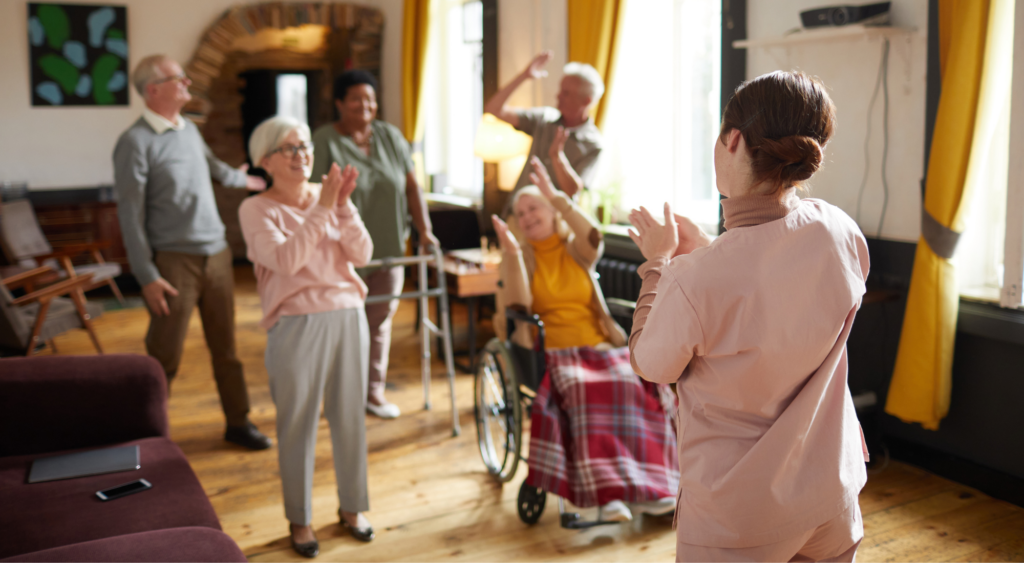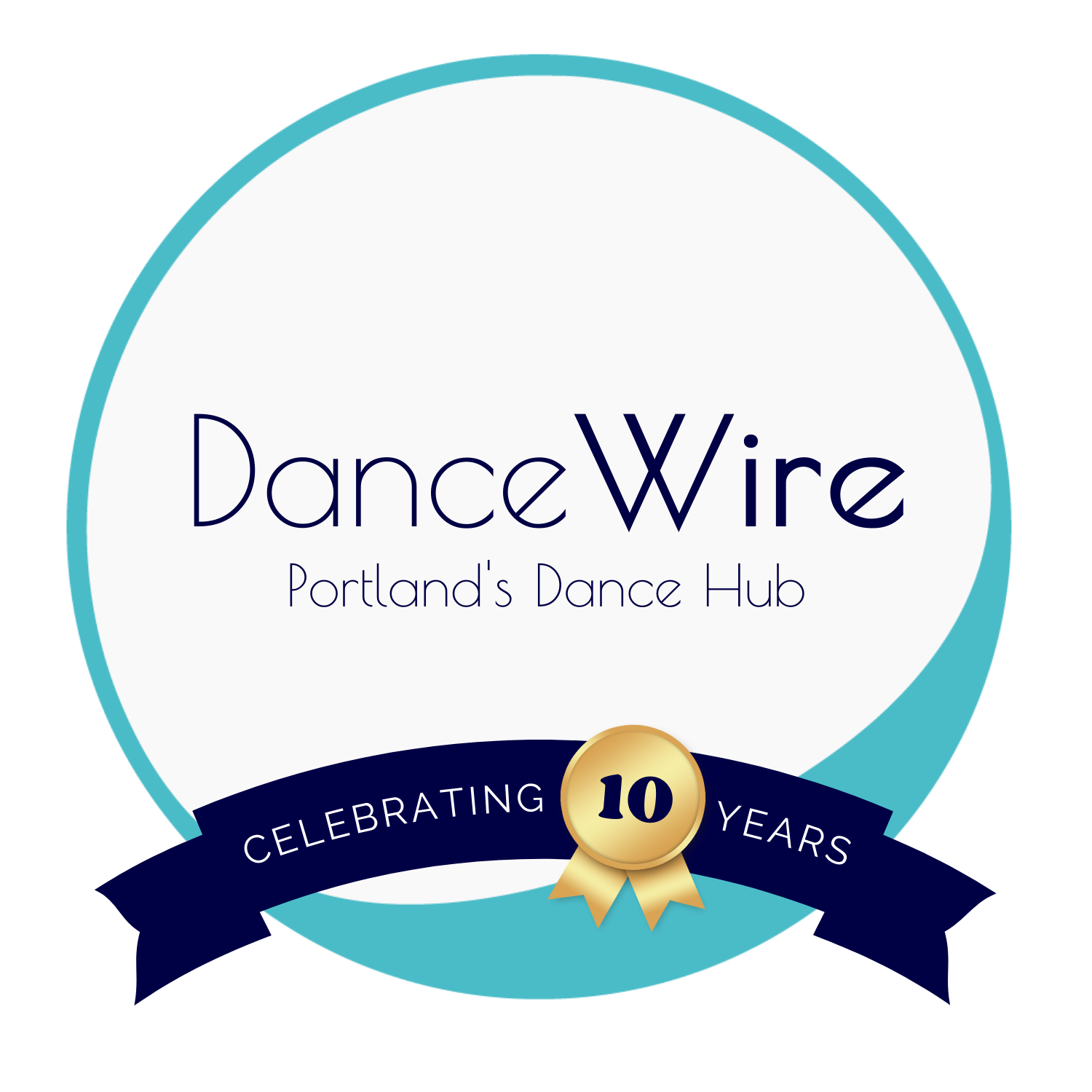Humans exhibit a beautiful range of forms, encompassing varying features, strengths, and abilities.The same is true with dance. Each dancer has the capacity to express themselves through movement in a truly distinct way using their own unique body.
Accessibility is an integral part of conversations about inclusion in dance. Accessible dance ranges from classes tailored to people with a specific disability, to improv methods designed to accommodate any individual who might participate, to individual dancers creating their own movement vocabulary based on their specific needs.
Accessibility means much more than having a wheelchair-accessible space.
Disabilities can be as individualized as each person. Open communication and relationships are crucial to meeting diverse needs.

Table of Contents
- Defining “Dance for All Abilities”
- How To Make Room In Dance for All Abilities
- Dance for People With Disabilities: Actionable Ways Studios Can Be Inclusive
- Supporting Dance for All Abilities with Dance Wire
Defining “Dance for All Abilities”
Dance for all abilities, or adaptive dance, doesn’t have one standard definition.
In general, however, throughout the dance community, “dance for all abilities” refers to adapting as necessary to the needs of a specific group or individual, such as:
- Downs syndrome
- Autism spectrum
- Wheelchair-bound; or
- Hearing impaired
For example, a studio may offer dance classes specifically designed for deaf individuals. These classes would involve sign language and may or may not include music.
Inclusive dance, or all-access dance, on the other hand, refers to an open invitation to any individual, whether they have a specific disability, identify as having a disability, or identify as able-bodied.
The important thing to remember is that both dance for all abilities and inclusive dance are ongoing conversations that should evolve with the needs of the individual.
How To Make Room In Dance for All Abilities
Accessibility in the dance world isn’t just about wheelchairs, or people who are missing a limb.
And the process of making room in dance for all abilities involves so much more than simply marking items off of a checklist.
Rather, the answer to creating space for all abilities in dance focuses on two things: relationship and conversation.
When you’re in a relationship with another individual, you can have a conversation that is centered around their needs and discover what it takes for them to be able to thrive in a dance setting.
For example, they may be sensitive to strong smells. The class could adapt to this by choosing not to use strongly scented shampoos or body washes on the day of class. If they are bothered by loud sounds, the class may choose to play music at a lower volume.
Structuring a Dance Class for All Skill Levels
Facilitating dance for all skill levels revolves around finding movements that everyone in the class can do.
When structuring a dance class for all abilities, stay away from activities, exercises, moves, or goals that can be done by some in the group — but may be impossible for one or more participants.
How Can Dance Studios Become More Inclusive with Dance for All Abilities?
The biggest step dance studios can take to become more inclusive of dance for all abilities is to get training in dance inclusivity.
While the internet can be a helpful tool for many things, the best avenues for discovering practical ways to create inclusivity in the world of dance are through direct conversation and training.
Make it a point to seek out and speak to people who have disabilities, and visit other studios that have gone before you and have already begun taking the steps to offer dance for all abilities.


DanceAbility Method
DanceAbility, based in Eugene, OR, was one of the first groups to invite literally “anyone” into their space to dance. The founder of DanceAbility has taught classes where people were wheeled in on a gurney — in a coma — to participate in dance class.
DanceAbility uses improvisational dance to:
- Promote artistic exploration and expression by creating opportunities for people with and without disabilities to move together.
- Allow people from very diverse backgrounds to experience the art of being together.
- Help decrease the existing prejudice and misconceptions about diversity in the field of dance and society.
- Cultivate cultural and artistic diversity through performance, communication, and education.
- Encourage the evolution and performance of dance.
Wobbly Dance Performance Company
Yulia Arakelyan, one of Dance Wire’s 2018 Ambassadors, is cofounder of Wobbly, a performance company whose mission starts with the belief that to “present a disabled body onstage is a radical act capable of stitch by stitch transformation of the cultural fabric of our community.”
This mission is deeply woven into performances put on by Wobbly, performances that are largely based on:
- Improvization
- Authenticity; and
- Butoh (a a form of Japanese dance theatre)
These performances encapsulate Wobbly’s belief that “disability is a natural variation of the human form and in this variation there is art.”
Wobbly continually invites viewers to engage and explore the world of possibility.
Axis Dance Company
The mission of Axis Dance Company is to collaborate with both disabled and non-disabled artists to create world-class productions that challenge the current perceptions of dance and disability.
They strive to create a radically inclusive dance sector by showcasing the beauty of difference through the removal of barriers.
This is accomplished through these three pillars of dance:
- Artistry
- Engagement
- Advocacy
Heidi Latsky Dance
As a New York-based, female-run organization, Heidi Latsky Dance provides tailor-made lectures and residencies that specifically focus on equity, diversity, and inclusion.
Their goal is to disrupt space, dismantle what we consider to be normal, and redefine beauty and virtue through innovative performance and discourse.
Heidi Latsky Dance desires to create relevant, immersive performance art that is accessible to every dancer, regardless of their ability.
How Dance Wire Encourages Adaptive Dance
At Dance Wire, we think about adaptive as movement tailored to a specific population vs. inclusion or all access, which refers to all disabilities.
We’re committed to supporting the local community in the ongoing effort to create spaces where all are welcome to participate in dance – as dance is for everyone!
Many dance spaces were not designed for people with disabilities or specific challenges, so for many studios, everything done with accessible, adaptive, and inclusive dance and movement is being retrofitted as specific needs arise.
Dance Wire is excited to have the opportunity to learn and grow as we seek to support welcoming dance spaces for people of all abilities.
Dance for People With Disabilities: Actionable Ways Studios Can Be Inclusive
Dance studios can take steps towards inclusivity by considering factors such as:
- Lighting — Keeping the lights turned down low and avoiding fluorescent lighting when possible
- Smells — Encouraging participants not to wear perfumes or fragrances since many people are highly sensitive to them
- Touch — Being respectful and creating space for people who wish to avoid being touched
Studios can also offer dance classes specifically tailored to students with physical, emotional, or developmental disabilities.
By creating experiences with these factors in mind, dance studios can open the gate to dance education and begin to break down the traditional barriers of who is — and is not — considered a dancer.


Supporting Dance for All Abilities with Dance Wire
At Dance Wire, we are supporting the dance community in becoming more inclusive by doing what it takes to open the world of dancing to everyone.
We’re committed to providing ongoing support by connecting people with others in the community doing inclusive and adaptive work. With DanceAbility-certified team members, we can help with the design of inclusive dance spaces, classes, and experiences.
The most influential art comes from a creative process where dancers work together, listen deeply, respect one another, and honor different experiences within the group.
While a powerful soloist is exciting, a diverse ensemble is breathtaking.
Contact us today to learn more about the dynamic relationship between dance artists, organizations, and the community that benefits from their work to connect, inspire, and support each other.
Help us keep Portland dancing!

